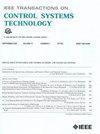LISA 空间任务的无阻力和姿态控制系统:一种 $H_{\infty}$ 受限解耦方法
IF 4.9
2区 计算机科学
Q1 AUTOMATION & CONTROL SYSTEMS
引用次数: 0
摘要
本文介绍了一种基于约束解耦$H_{\infty }$方法的激光干涉仪空间天线(LISA)空间任务的无阻力和姿态控制方法。LISA 将是一个天基引力波观测站,预计由欧洲航天局(ESA)于 2034 年发射。LISA 的概念由三个卫星星座组成,通过交换双向激光链路进行干涉测量。引力波可以通过激光干涉仪测量远处两个自由落体之间的相对距离变化来探测,这两个自由落体被称为试验质量(TMs)。在这一框架中,航天器(SC)的无阻力姿态控制起着关键作用,因为它允许 TMs 在自由落体条件下运动,在纳米级水平上拒绝可能影响科学测量质量的外部干扰和噪音。为此,我们提出了一种 $H_{\infty }$ 无阻力姿态控制器,该控制器基于 SC 线性动力学的受限解耦,控制矩阵的伪倒数通过最小化反演误差获得。此外,我们还提供了闭环稳定性的充分条件,以确保解耦反演误差不会影响闭环稳定性。通过使用高保真模拟器进行广泛的蒙特卡罗运动,证实了所建议方法的有效性。本文章由计算机程序翻译,如有差异,请以英文原文为准。
Drag-Free and Attitude Control System for the LISA Space Mission: An H∞ Constrained Decoupling Approach
This article presents an approach to drag-free and attitude control for the laser interferometer space antenna (LISA) space mission, based on a constrained decoupling
$H_{\infty }$
approach. LISA will be a space-based gravitational wave observatory, which is expected to be launched by the European Space Agency (ESA) in 2034. The LISA concept consists of a constellation of three satellites that exchange a bidirectional laser link to perform interferometry. The gravitational waves can be detected by measuring the relative distance variations, by means of laser interferometers, between two free-falling bodies located at a far distance, called the test masses (TMs). In this framework, the spacecraft (SC) drag-free attitude control plays a key role since it allows the TMs to move in free-fall conditions, rejecting external disturbances and noises, at the nanoscopic level, that can compromise the quality of scientific measurements. To this end, we propose an
$H_{\infty } $
drag-free attitude controller, based on a constrained decoupling of the SC linearized dynamics, where the pseudoinverse of the control matrix is obtained by minimizing the inversion error. Moreover, we provide sufficient conditions for stability of the closed-loop, in order to ensure that the decoupling inversion error does not affect the closed-loop stability. The effectiveness of the proposed approach is confirmed by means of an extensive Monte Carlo campaign, carried out employing a high-fidelity simulator.
求助全文
通过发布文献求助,成功后即可免费获取论文全文。
去求助
来源期刊

IEEE Transactions on Control Systems Technology
工程技术-工程:电子与电气
CiteScore
10.70
自引率
2.10%
发文量
218
审稿时长
6.7 months
期刊介绍:
The IEEE Transactions on Control Systems Technology publishes high quality technical papers on technological advances in control engineering. The word technology is from the Greek technologia. The modern meaning is a scientific method to achieve a practical purpose. Control Systems Technology includes all aspects of control engineering needed to implement practical control systems, from analysis and design, through simulation and hardware. A primary purpose of the IEEE Transactions on Control Systems Technology is to have an archival publication which will bridge the gap between theory and practice. Papers are published in the IEEE Transactions on Control System Technology which disclose significant new knowledge, exploratory developments, or practical applications in all aspects of technology needed to implement control systems, from analysis and design through simulation, and hardware.
 求助内容:
求助内容: 应助结果提醒方式:
应助结果提醒方式:


